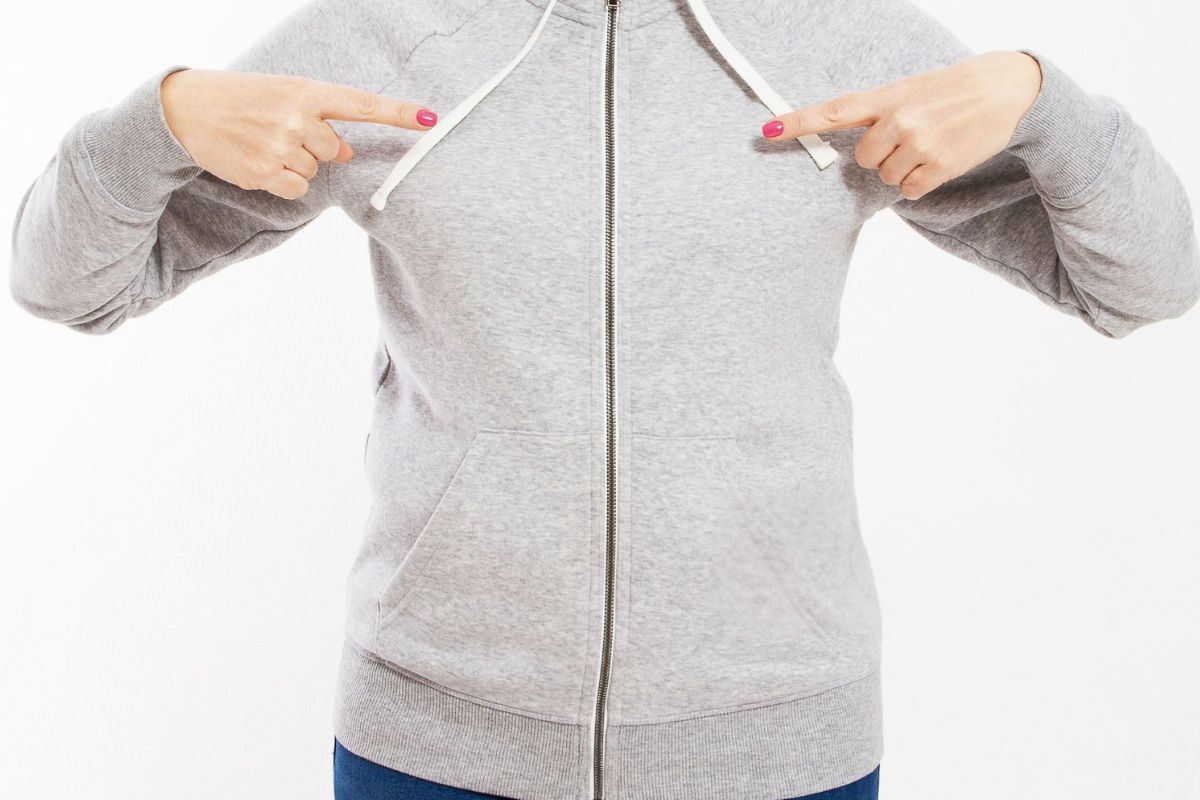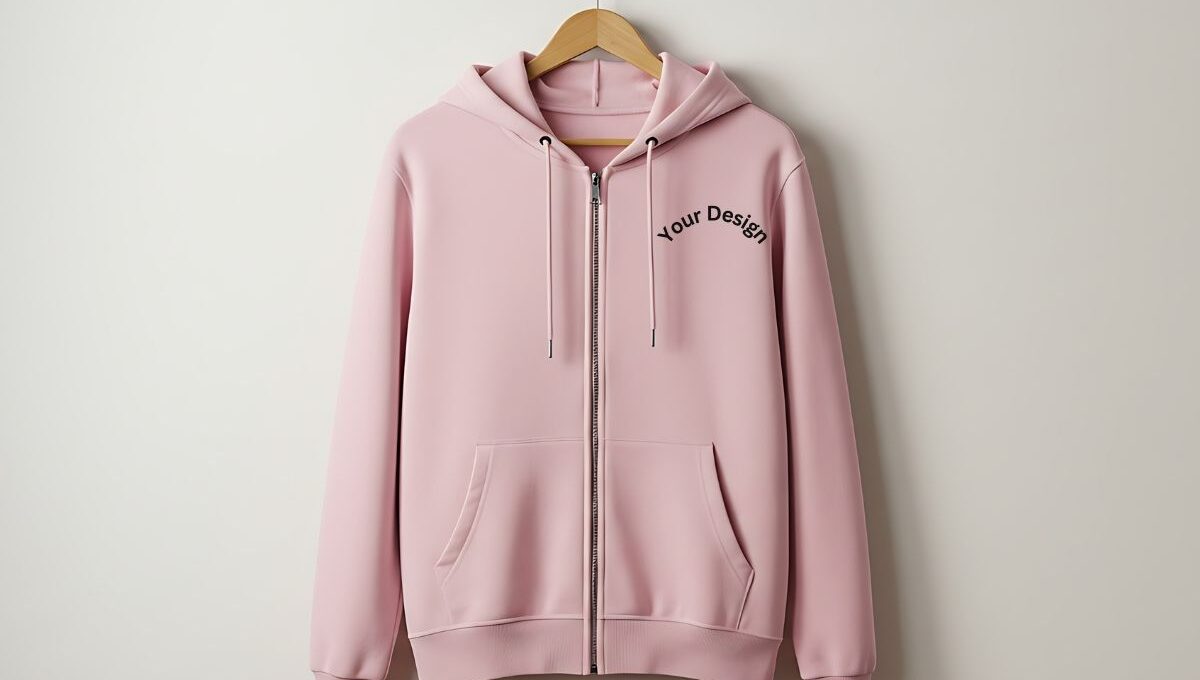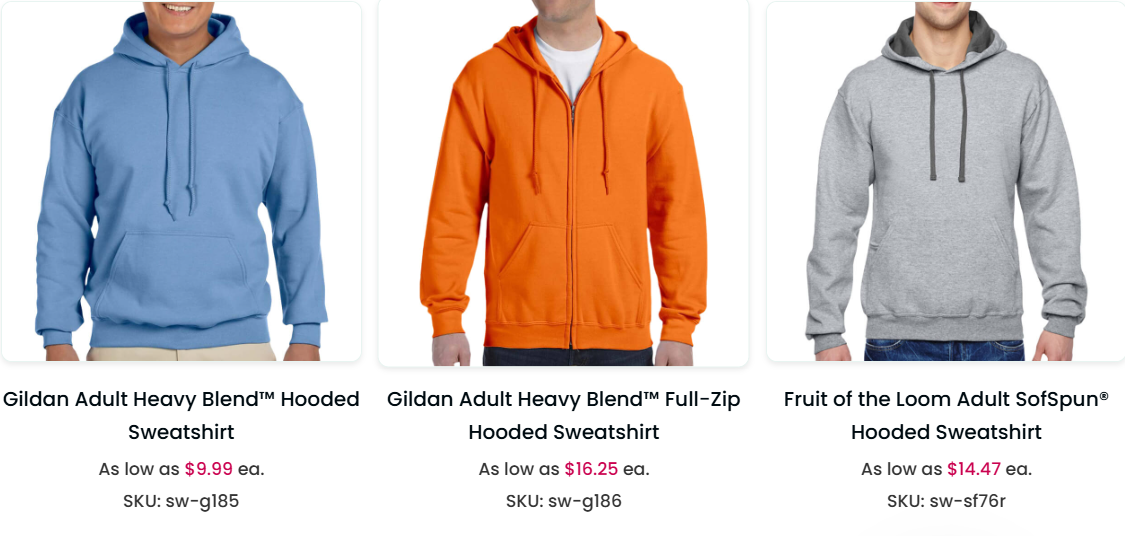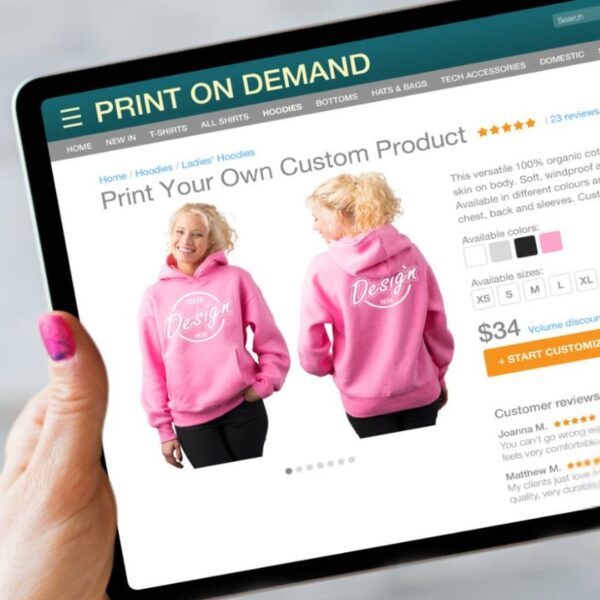Introduction
Print on Demand (POD) has revolutionized the way entrepreneurs, artists, and brands bring products to market. With no need to hold inventory, manage shipping, or invest in large upfront costs, POD allows anyone to sell custom-designed products online with minimal risk.
Among the most popular POD apparel items, personalized zip-up hoodies stand out. They offer practical comfort, year-round appeal, and a large canvas for creativity. Whether you’re building a streetwear brand, launching a fitness line, or starting a niche apparel store, zip-up hoodies are a high-demand product worth exploring.
Table of Contents
In this comprehensive guide, you’ll learn how to design your own personalized zip-up hoodies and sell them online using top POD platforms.
Step 1: Designing Your Personalized Zip-Up Hoodie
Brainstorm and Research Design Ideas
Before you begin designing, research is crucial. Start by identifying what types of hoodie designs are trending in your niche. Check marketplaces like Etsy, Redbubble, and Amazon to analyze best-selling hoodies.
Understanding your target audience is key. Are you targeting gamers, fitness enthusiasts, eco-conscious consumers, or fashion-forward teens? Each group has unique tastes and expectations.
Use tools like Pinterest, Instagram, and Google Trends to find inspiration. Additionally, explore what successful competitors are offering and look for opportunities to improve or personalize their concepts.
Choose the Right Design Software and Tools
Designing high-quality zip-up hoodies requires the right tools. Beginners can start with user-friendly platforms like Canva, which offers templates, fonts, and mockups. For more advanced users, Adobe Illustrator and Photoshop provide complete creative control and vector-based design capabilities.
Some POD platforms, like Printify and Printful, offer built-in design tools and mockup generators. You can also experiment with AI-powered design tools like Midjourney or DALL·E to generate unique artwork quickly.
Free vs. paid resources is another consideration. Free platforms offer accessibility, but premium tools often provide better fonts, graphics, and export options, which may result in more professional-looking designs.
Hoodie-Specific Design Considerations
Designing for hoodies, especially zip-up styles, comes with unique challenges and opportunities:
- Design Placement: Consider the front panels (which are split by the zipper), back, sleeves, hood, and even pockets. Avoid placing key design elements directly over the zipper area, unless it’s part of a creative concept.
- Color Contrast: Ensure your artwork stands out against the fabric. Dark designs on black hoodies will be hard to see, so adjust colors accordingly.
- Size and Resolution: Always design with at least 300 DPI resolution and use the dimensions recommended by your POD platform. This ensures crisp, high-quality prints.
Create and Finalize Your Design
Once your design concept is ready, open your chosen POD platform’s design tool (e.g., Printify’s Product Creator or Printful’s Design Maker). Upload your artwork and carefully position it on each part of the hoodie.
Use the built-in preview tools to visualize how the final product will look. Check the alignment of graphics near the zipper, test different hoodie colors, and adjust placement as needed for visual balance.
Finalize the design only after reviewing it on multiple mockups to ensure it appears well on both desktop and mobile views.
Save and Export Your Design
When saving your final hoodie design, use the correct file formats:
- PNG: Ideal for high-resolution images with transparent backgrounds.
- SVG: Best for vector graphics, logos, or typography (if supported).
- JPEG: Acceptable for photography-based designs, but less preferred.
Double-check your POD provider’s file requirements for maximum size, resolution, and color mode (usually RGB). Export your artwork accordingly and store a master copy for future edits or color variations.
Step 2: Selling Your Personalized Zip-Up Hoodie with POD

Selecting the Best POD Platform
Choosing the right POD provider can significantly impact your profit margins, shipping speed, and product quality.
- SwagifyPOD offers a vast network of global print providers, allowing for competitive pricing and a wide selection of hoodie styles.
- Printful provides in-house production with consistently high quality, fast fulfillment, and powerful branding features.
- Apliiq specializes in premium fashion POD with unique features like woven labels and embroidery, great for brand differentiation.
- Awkward Styles supports full-service POD with customizable branding, offering a wide range of apparel and reliable fulfillment.
When choosing, consider factors like shipping times, available hoodie types, printing quality, customer support, and integration options with your preferred e-commerce platform.
Creating High-Converting Product Listings
| Element | What to Include | Why It Matters | Pro Tips |
|---|---|---|---|
| Product Title | Custom Full-Zip Hoodie – Your Design, Your Style | Grabs attention, includes keywords | Keep it clear + SEO-friendly. Example: Custom Full-Zip Hoodie – Personalized Comfort for You |
| Bullet Points | – Material (e.g., 100% cotton) – Fit (slim/relaxed) – Custom options – Sizes – Unisex/Men/Women | Quickly conveys features & benefits | Use 4–6 bullets max. Highlight what makes it special. |
| Product Description | Detailed paragraph about comfort, fabric, design process, shipping, etc. | Builds emotional connection + trust | Tell a story. Focus on why they’ll love it, not just what it is. |
| SEO Keywords | Custom full-zipped hoodie, personalized hoodie, zip-up sweatshirt, design your hoodie | Boosts search visibility | Include 2–3 long-tail keywords naturally throughout the listing. |
| Product Images | – Front & back – Close-up of zipper & fabric – Customization example – Lifestyle shot | Visual proof drives sales | Use 4–6 high-res images. Include model shots for better relatability. |
| Size Chart | Accurate measurements by size (S to XXL), in inches/cm | Reduces returns + boosts buyer confidence | Add a model reference like: “Model is 5’9″ wearing size M.” |
| Customization Options | Design area, text/font choices, embroidery/print type | Enhances perceived value + engagement | Use dropdowns or live preview tools if possible. |
| Pricing | Clear price with customization breakdown (if needed) | Sets expectations + avoids cart abandonment | Show discounts for bundles or first-time buyers. |
| Shipping Info | Timeline, carrier, tracking availability | Answers common questions upfront | Show estimated delivery date range (e.g., “Delivers in 5–7 days”). |
| Returns & Guarantee | Return window, refund/replacement policy | Builds trust and lowers buying risk | Use phrases like “Hassle-Free Returns” or “100% Satisfaction Guaranteed.” |
| Customer Reviews | Testimonials with photos or verified badge | Social proof converts browsers into buyers | Request reviews with a follow-up email after delivery. |
| Call to Action (CTA) | “Design Yours Now” / “Add to Cart” / “Start Creating” | Encourages instant action | Use urgency phrases like “Limited Stock” or “Your Design, Ships Tomorrow.” |
A well-optimized product listing can make the difference between a scroll and a sale. Focus on three key components:
- Product Title and Description: Use SEO-friendly keywords like “custom zip-up hoodie for men” or “personalized unisex hoodie.” Highlight the material, fit, and what makes your design unique.
- Professional Mockups: Use lifestyle mockups and multiple angles to show off your design. Realistic images build trust and help customers visualize the product.
- Pricing Strategy: Consider your total cost (base cost + shipping + platform fees), and set a price that gives you a healthy margin—usually between 30% and 50%. Add urgency with limited edition tags or discounts for first-time buyers.
Integrating Your Store with POD Fulfillment
To automate sales, integrate your POD provider with an online store:
- Shopify offers robust customization and full control over branding and design.
- Etsy is ideal for beginners and trend-based designs but has high competition.
- WooCommerce is perfect for WordPress users looking for flexibility.
- BigCommerce and Wix also support seamless POD integrations.
Once integrated, orders are automatically sent to your POD provider for fulfillment, saving you time and effort.
Types of Fabric for Personalized Zip-Up Hoodies
Selecting the right fabric is essential for both comfort and customization quality. Different materials offer unique benefits in terms of softness, durability, print compatibility, and weather suitability. Here’s a detailed look at the most popular fabric options for custom zip-up hoodies:

Cotton
- Natural and breathable: Cotton is a go-to fabric for its soft feel and skin-friendly nature.
- Ideal for casual comfort: Perfect for loungewear or everyday use, especially if you’re looking for a relaxed, cozy hoodie.
- Great for printing: Works well with screen printing and embroidery due to its absorbent surface.
Cotton-Polyester Blend
- Durable and low-maintenance: Blended fabrics are designed to resist shrinking, wrinkling, and fading.
- Maintains shape over time: Ideal for hoodies that need to stay structured and neat even after repeated washing.
- Balanced comfort and function: Offers a smooth finish that supports consistent print results.
Polyester
- Lightweight and quick-drying: A performance-friendly fabric often used in athletic and streetwear designs.
- Moisture-wicking: Helps keep the wearer dry, making it great for hoodies used in active settings.
- Sublimation-ready: Provides a sleek surface that holds sublimated prints vibrantly and permanently.
Fleece
- Thick and insulating: Known for its warmth, fleece is perfect for colder climates and winter collections.
- Soft interior lining: Offers a plush feel against the skin, increasing the comfort level significantly.
- Best for cozy, warm hoodies: Often used in premium or outdoor-focused designs.
French Terry
- Loopback knit fabric: Features small loops on the inside and a smooth surface on the outside.
- Breathable yet warm: Offers lighter warmth compared to fleece, ideal for transitional seasons like spring and fall.
- Great for layering: French terry hoodies are versatile for both casual and semi-athletic wear.
Tri-Blend (Cotton, Polyester, Rayon)
- Ultra-soft and stylish: Combines the best of three fibers to deliver a silky texture with a fashionable drape.
- Lightweight and breathable: Excellent for all-day comfort without the bulk.
- Ideal for premium custom designs: Frequently used in fashion-forward or retail-quality hoodies that stand out.
Marketing Your Hoodies for Maximum Sales

No matter how good your product is, it won’t sell without visibility.
- Social Media Marketing: Create daily content on Instagram, Pinterest, and TikTok showcasing your designs, behind-the-scenes processes, or customer testimonials.
- Email Marketing: Build an email list using pop-ups and offer discounts to subscribers. Send product updates, launch announcements, and promotions to keep engagement high.
- Paid Ads: Use Facebook and Instagram Ads to target audiences based on interests, demographics, or shopping behavior. Google Shopping Ads are useful for targeting users actively looking to buy.
Consistency and testing are key. Try different content formats—reels, carousel posts, influencer shoutouts—and measure performance to refine your strategy.
Managing Customer Service and Feedback
Customer satisfaction plays a huge role in long-term success. Even though POD providers handle printing and shipping, you’re the face of your brand.
- Handle Returns and Exchanges: Have clear policies on your website. Be prompt, polite, and solution-oriented when dealing with customer issues.
- Encourage Reviews: Follow up with customers after delivery and request honest reviews. Offer discounts or small freebies for leaving feedback.
- Use Feedback to Improve: If multiple buyers mention sizing issues or print quality concerns, take it seriously and switch POD partners or adjust designs accordingly.
Comparison of Top POD Platforms for Personalized Zip-Up Hoodies
| POD Platform | Key Features | Pricing Transparency | Customization Options | Shipping Speed | Overall Rating |
|---|
| SwagifyPOD | Exclusive focus on custom apparel, bulk discounts, and branding tools | High | Extensive | Fast (3–5 days avg) | ★★★★★ |
| Printful | Wide product range, easy integrations, global warehouses | Medium | High | Medium (5–7 days) | ★★★★☆ |
| Printify | Large supplier network, affordable rates, broad variety | Medium | Medium-High | Varies (depends on supplier) | ★★★★☆ |
| Teespring | No upfront cost, creator-focused, simple UI | High | Basic | Medium (5–8 days) | ★★★☆☆ |
| Redbubble | Marketplace model, passive income, less control over fulfillment | Low | Limited | Medium (5–9 days) | ★★★☆☆ |
| Zazzle | Tons of product types, built-in customer base | Low | Moderate | Medium (5–10 days) | ★★★☆☆ |
Each platform has unique strengths:
- Printify is ideal for cost-efficiency and flexibility with global print partners.
- Printful excels in product quality and fast, branded shipping.
- Apliiq stands out for premium features like fabric tags and embroidery, great for fashion-forward or luxury brands.
- Awkward Styles offers excellent product range and user-friendly tools for quick mockups and store integration.
Choose the one that aligns best with your brand vision and long-term goals.
Conclusion
Designing and selling personalized zip-up hoodies with Print on Demand is not only profitable but also incredibly accessible. With the right tools, platforms, and strategies, you can launch your own apparel line without holding any inventory or taking on unnecessary financial risks.
Start by researching your audience, crafting compelling designs, choosing a reliable POD provider, and launching a well-branded store. Then, promote consistently and respond to customer needs as your business grows.
Your hoodie business starts with one idea and one click. Launch your first personalized zip-up hoodie today and turn your creativity into profit.





Sign up